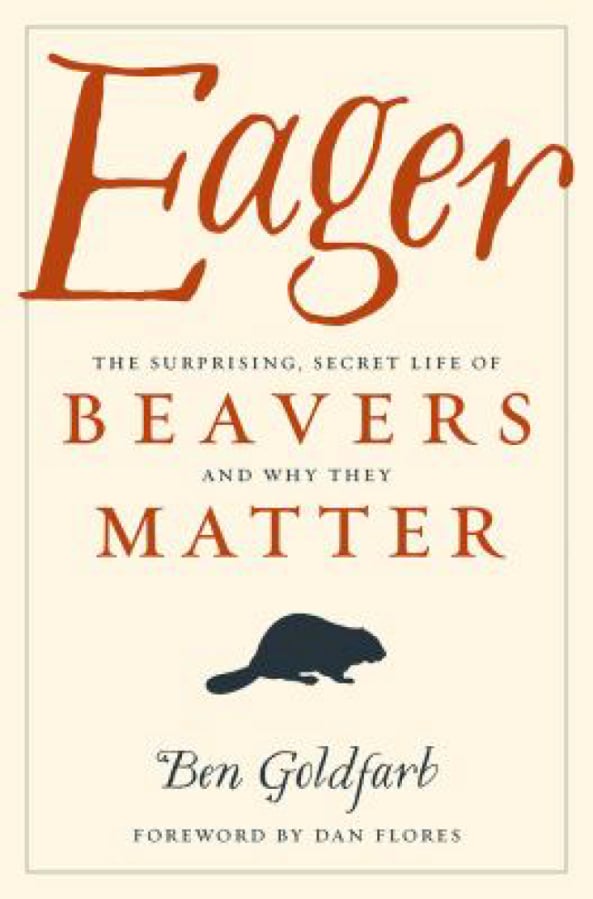This is without a doubt the most persuasive book I have ever read. If you need any amount of convincing that beavers are absolutely essential (that’s right — not just essential but absolutely essential) to our planet, check out Ben Goldfarb’s book now. Informative, witty, eye-opening, “Eager” has turned me into a complete “beaver believer.” Aside from noting a beaver dam or lodge during outdoor excursions, I hadn’t given beavers much thought. The sum total of my beaver knowledge before reading this book went something along these lines: beavers have paddle-shaped tails that are good for slapping on the water; they make dams and lodges; their fur was highly prized during the fur trade; they’re good at felling trees; and around here a “beaver fanatic” equals an avid college football fan not a lover of rodents. Now that Goldfarb’s ode to the Castor (that’s the genus of this species) has expanded my castorid awareness, don’t be surprised if I go all fangirl at my next beaver dam sighting. Squee!
Why are beavers so important? For one thing, they’re a keystone species. A keystone species, according to the Encyclopedia Britannica, is one “that has a disproportionately large effect on the communities in which it occurs.” In other words, beavers are a key player in biodiversity, helping other species such as trumpeter swans to survive and thrive. Beavers are also ecological wizards, bringing water back to drought-stricken areas allowing much needed flora and fauna to regenerate, which then allows more species to feed and populate natural areas. Win, win, win.
Unfortunately, humans have been hard on beavers, and there are two primary reasons why this is so: fur and water. Beaver hats were one of the fashion statements across much of Europe during the early to mid-19th century, so naturally the demand was high; so high, in fact, that the trapping and slaughter of beavers for their pelts nearly wiped out the beaver population in North America. If we love them for their fur, we hate them for their behavior. Beavers build dams — it’s what they do. The problem is that a dam built in say, a culvert, can lead to flooding and structural damage of roads, buildings and farmers’ fields. Not surprisingly, the solution often resorts to killing the offending rodents. While this may seem justified in cases where beavers interfere with the business and progress of humankind, there are other ways to handle what you might call nuisance beavers. Many groups are willing to help relocate them to areas where these semiaquatic critters are needed and welcome. Or, depending on the situation, the best solution might involve installing a flow device (for example, at the end of a culvert) which keeps beavers out but allows water to flow through. Dam fine idea, I say.
Learning about beavers and their habitat has never been so delightful. While “Eager,” the winner of the 2019 PEN/E.O. Wilson Literary Science Writing Award, is full of scientific information, not once did I feel book-weary with facts and stats. Goldfarb turns what could be a dry treatise on science and nature into a fascinating and charming account about our tree-gnawing neighbors. When Goldfarb interviews a biologist and the conversation turns to predators of the beaver, specifically the grizzly bear, the biologist says that in the grizz’s eyes the beaver is a “fat, slow, smelly meat package” — descriptive and accurate. Did you know that a select group of castorids sky-dived their way into a new habitat thanks to a special beaver named Geronimo? Oh, I could go on and on about these paddle-tailed wonders, but I’ll stop because what I really want to you to do is read “Eager,” and become a “beaver believer” like me.



